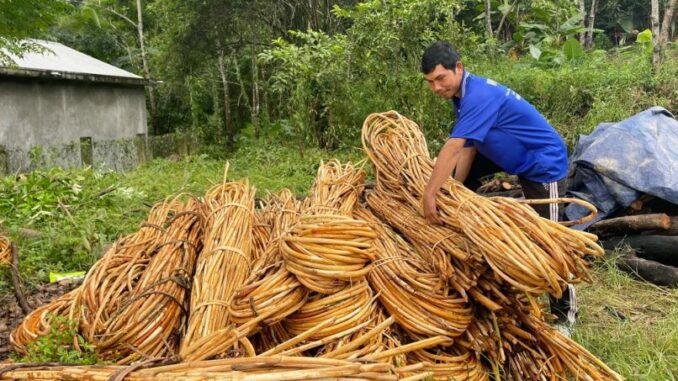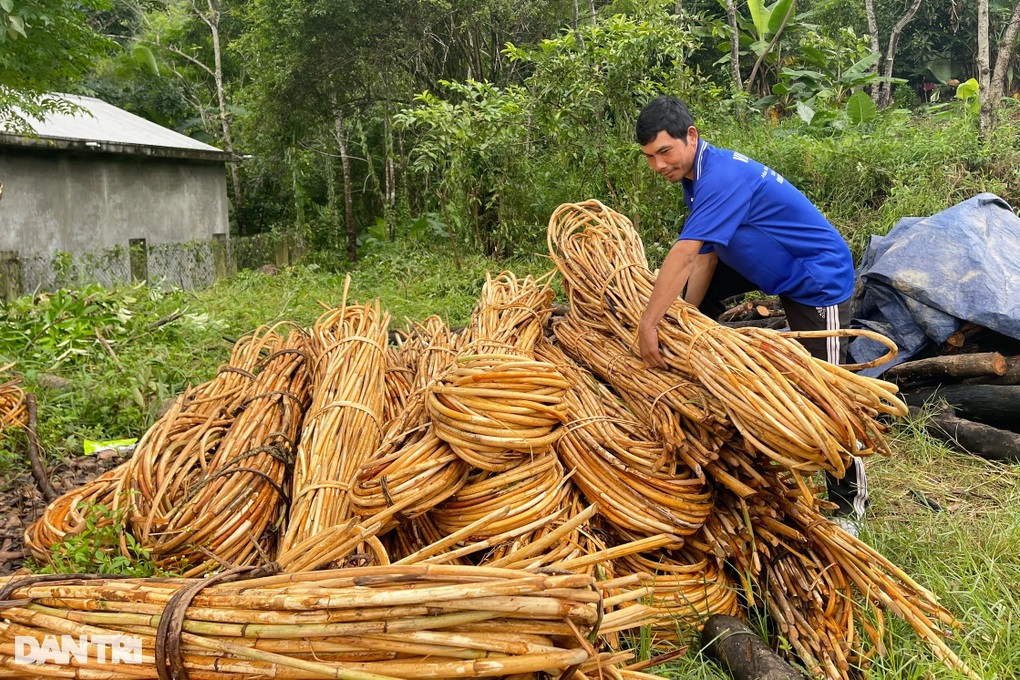
Quang Ngai people take advantage of the forest canopy to plant water rattan. After 5 years, each hectare of water rattan can bring people an income of 40-50 million VND.
Since 2012, people in Ba To district (Quang Ngai province) have started implementing the project of growing water rattan under the protective forest canopy. Initially, the project had a scale of 80 hectares with 40 participating households. Mr. Pham Van Thot (Ba Trang commune, Ba To district) is one of the first households to participate in the project.
Mr. Thot said, in the past, people went into the forest to exploit wild rattan to sell to traders. However, natural rattan trees are becoming less and less. Meanwhile, the market demand for rattan is quite large, so people started growing rattan under the forest canopy.

Each hectare of forest land can be intercropped with 600-800 rattan roots. If rattan trees are planted under the forest canopy and are invested in fertilizer and well cared for, they will only begin to be harvested after 4-5 years. Trees that are cared for and exploited properly will yield continuous harvests for 18-20 years.
“Rattan trees are grown for about 5 years before they can be harvested. Mature trees branch very quickly so they can be harvested continuously, helping us have a regular source of income,” Mr. Thot said.
Water rattan trees are purchased at a price of 4,200 VND/kg, at times the price of water rattan is up to more than 7,000 VND/kg. On average, each hectare of rattan planted under the forest canopy brings an income of 40-50 million VND per year.

Since the implementation of the rattan planting project under the forest canopy, people have gone into the forest more often, thereby contributing to forest protection. The forests assigned to people to grow rattan no longer have illegal logging.
Due to high economic efficiency and sustainability, more and more households are participating in growing water rattan. The entire province currently has about 1,000 hectares of rattan trees, concentrated mainly in Ba To, Minh Long, and Tra Bong districts.

Mr. Pham Duy Hung, Director of Quang Ngai Provincial Forest Protection Department, said that in recent times, the forest ranger industry has closely coordinated with localities, creating favorable conditions for people to implement projects and models. planting water rattan under the forest canopy.
This is truly a suitable direction to contribute to the development of the hill and forest economy, increase income for farmers from forestry, and create conditions for farmers to stick with the forest.
Growing water rattan under the forest canopy has contributed to shifting thinking from traditional forestry development and production to forestry economic development.
In the coming time, the forestry sector will advise the Department of Agriculture and Rural Development and specialized agencies to expand the area of rattan planting as well as medicinal plants. This will help people exploit forests economically and sustainably.
($1=24,000 VND)
Photo,Video: Internet (Vinlove.net)
